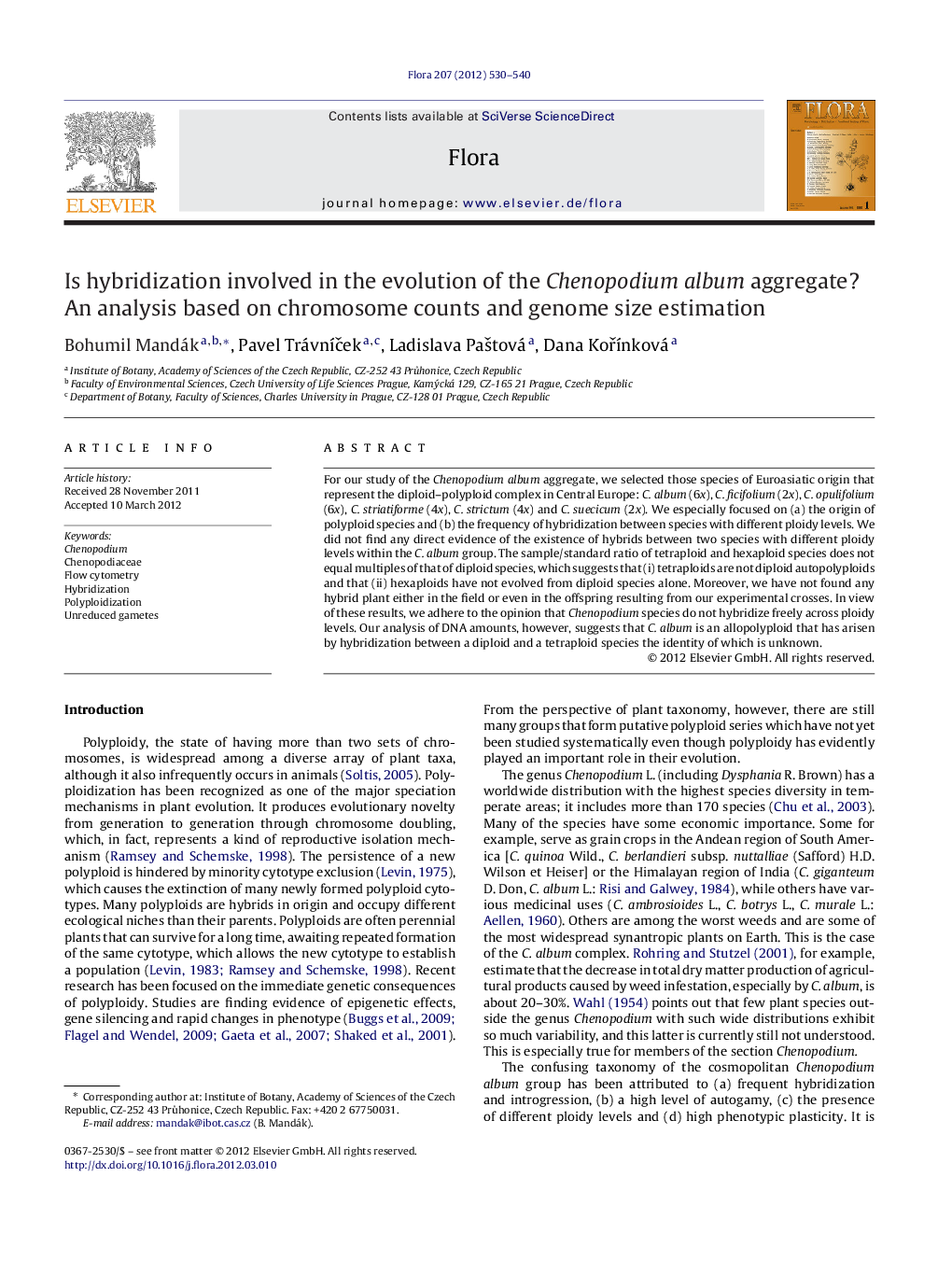| Article ID | Journal | Published Year | Pages | File Type |
|---|---|---|---|---|
| 2179689 | Flora - Morphology, Distribution, Functional Ecology of Plants | 2012 | 11 Pages |
For our study of the Chenopodium album aggregate, we selected those species of Euroasiatic origin that represent the diploid–polyploid complex in Central Europe: C. album (6x), C. ficifolium (2x), C. opulifolium (6x), C. striatiforme (4x), C. strictum (4x) and C. suecicum (2x). We especially focused on (a) the origin of polyploid species and (b) the frequency of hybridization between species with different ploidy levels. We did not find any direct evidence of the existence of hybrids between two species with different ploidy levels within the C. album group. The sample/standard ratio of tetraploid and hexaploid species does not equal multiples of that of diploid species, which suggests that (i) tetraploids are not diploid autopolyploids and that (ii) hexaploids have not evolved from diploid species alone. Moreover, we have not found any hybrid plant either in the field or even in the offspring resulting from our experimental crosses. In view of these results, we adhere to the opinion that Chenopodium species do not hybridize freely across ploidy levels. Our analysis of DNA amounts, however, suggests that C. album is an allopolyploid that has arisen by hybridization between a diploid and a tetraploid species the identity of which is unknown.
